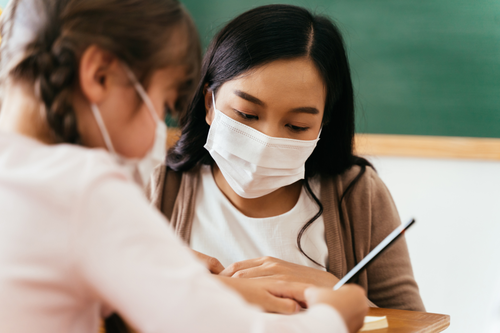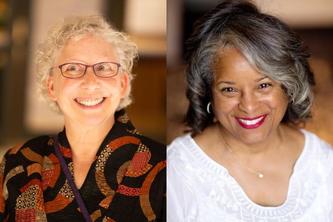U of M Survey: Minnesota educators, families and students agree support is needed for mental health and deeper engagement statewide

While many experts had concerns with the impact the pandemic would have on education, Minnesota educators, families and students agree that overall, K-12 students did learn during the 2020-21 school year. According to a University of Minnesota analysis of the new Minnesota Safe Learning Survey, the extent of how much coursework was perceived to be higher than the spring of 2020, but lower than pre-pandemic times.
The statewide survey of 10,500 educators, families and students was conducted in May and June by the Wisconsin-Minnesota Comprehensive Center (WMCC) in the University’s College of Education and Human Development for the Minnesota Department of Education (MDE). The survey’s goal was to provide a broad picture of how those most impacted by the state’s Safe Learning Plan actually experienced it in practice. It was a follow-up to the University’s Winter 2021 Safe Learning Survey, which focused on the experiences of these groups during the first half of the 2020-21 school year.
Support is needed for mental health
When asked to name their top three challenges during the school year, educators in all roles including administrators, teachers and support professionals, cited "taking care of my own mental health" and "supporting student mental health" as their top challenges. Families and students reported mental health support as their third greatest challenge. These findings were the same in the Winter 2021 survey.
"The most salient finding between the Winter and Spring Safe Learning Surveys was that educators, families and students are concerned about mental health," said Katie Pekel, the Principal in Residence at the University of Minnesota. "As we prioritize our return to school planning, this is a finding that cannot be overlooked."
Learning occurred
As in Winter, all three groups surveyed — students, educators and parents — felt that learning did occur during the 2020-21 school year. However, as grade levels increased, families felt that their students were learning less. Additionally, all groups continued to believe there was more learning taking place pre-COVID and that more learning occurred this school year than Spring 2020 when the state shifted entirely to distance learning.
Student engagement: mixed results
While findings suggested that there were successes in student engagement—teachers reported "engaging students in learning" as their top success, while students reported "knowing where to be and when" among their top three successes—researchers also found challenges in this area. Teachers reported "engaging students in learning" as their third-highest challenge, while students reported that "keeping up with my school work" and "understanding my school work" were their top two challenges. This may indicate that there were successes in reaching surface levels of learning during the 2020-21 school year, but challenges in achieving the support needed for deeper engagement in learning.
Moving forward
The Spring MN Safe Learning Survey added questions related to support needed moving forward. All respondent groups reported mental health and engagement among their top concerns and reported a desire to return to in-person schooling as much as possible. Educators discussed school infrastructure needs, including a more manageable workload and more funding, staffing and resources. Students generally desired changes that would help them feel less stressed and worry less about their grades, including a more manageable workload and more meaningful assignments. Family respondents, who largely expressed frustration with COVID-19 restrictions, reported their top concerns as student social interactions and relationships and student(s) being behind academically.
Additional analyses forthcoming on racial / geographic subgroups
Grouping all respondents together, widening achievement gaps and racism and racial microaggressions were less frequently mentioned concerns and areas for change among educators, families and students. However, additional analyses are now being completed around respondents’ race and geographic location for a number of the questions in the Safe Learning Survey. A supplemental report on those analyses will be available in the early fall of 2021.
Read the full report of the Spring Minnesota Safe Learning Survey. The survey will be distributed to districts across Minnesota one final time, from October to November 2021.
-30-
- Categories:
- Education
- Education practice and theory





